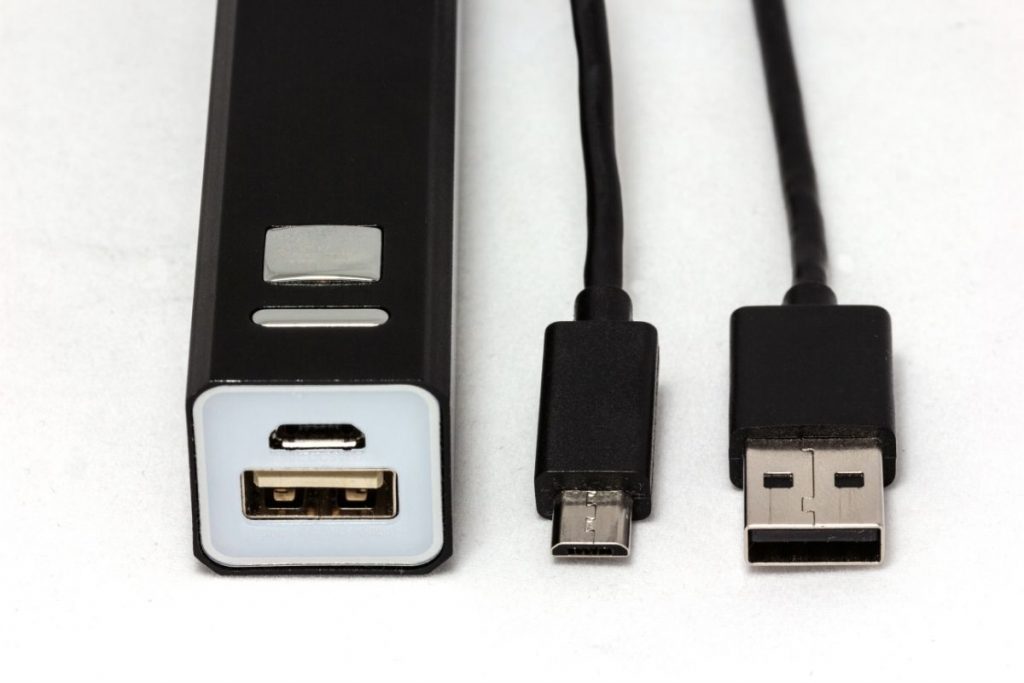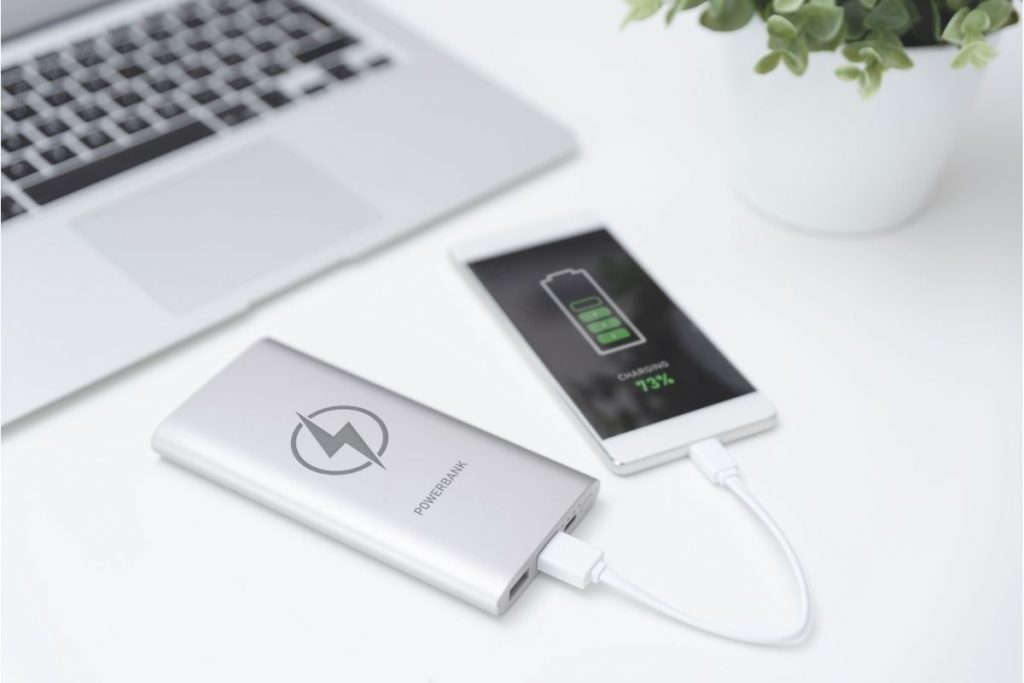Power banks are quickly becoming a common feature in everyday life. But, how exactly do they work? What are they made of? How can they last longer or get charged?
Power banks work by storing energy and then charging other devices that are low on energy. This article will answer all of your questions on how power banks work the way they do!
What Is a Power Bank?
A power bank is a portable device that stores up electrical power which can be used later to charge your phone, camera, or other electronic devices.
A power bank is also known as a portable charger, portable power source, battery pack, portable battery, portable power bank, etc.
How Does a Power Bank Work?
Power banks work by saving up energy and then discharging it when they’re connected to phones or other devices that need energy.
It’s a battery that has input and output ports. The input port is where the charger connects to energize the power bank, whereas the output port is where the devices connect and use the power bank. The input and output ports are USB compatible.
The built-in power bank lies within a casing and has a specialized circuit within it to regulate power flow. This charges your battery when it’s necessary, saving energy and ensuring that your battery pack never gets overcharged.
Power banks are often as complex as portable power electronics themselves. As a result, even if they appear simple, power banks include all sorts of sophisticated components.
Some rechargeable batteries are capable of wireless charging. While others also incorporate an LED flashlight for providing a small measure of light when required.
Others feature a pass-through charging function that allows them to charge their batteries and also allows simultaneous charging of mobile devices.

What are the Components of a Power Bank?
An input connector, charging circuit, battery, discharging circuit, output port, and indicators are the typical components of a power bank.
- Input Connector: used to charge the power bank
- Charging Circuit: intended to charge the power bank from a charger, controls the voltage and current supplied to the battery
- Battery: stores the energy that has been supplied to the power bank
- Discharging Circuit: manages how much electrical energy is taken from the battery by connected devices
- Output Port: used to link the power bank to devices and gadgets that will be charged from it
- LED Indicators: an additional feature for visual observation of the current charge level
What Type of Batteries Do Power Banks Use?
Power banks are generally composed of either Lithium-Polymer (Li-Po) or Lithium-Ion (Li-Ion) batteries. However, Li-Ion power banks are more popular than Li-Po power banks.
Although lithium-polymer batteries have a lower energy density, they typically have a shorter lifespan and are more expensive to make. They’re also less likely to explode.
Lithium-ion batteries have a higher energy density, can endure more charge/discharge cycles, and are less expensive!
How Do I Charge a Power Bank?
You can charge a power bank using a wall charger or through a computer USB port
Power banks require a little bit of time to recharge and the process is slightly different for each device. However, there are generally two ways in which power banks can be recharged:
- Use a Wall Charger: quickest charging method due to the power supply and available current in a wall outlet
- Connect it to any USB Input Socket
How Long Should You Charge Your Power Bank?
Depending on the type and battery capacity, a power bank’s charge time might take anywhere from 1 – 8 hours. A bigger power bank will generally charge slower than a smaller one.
Other elements, on the other hand, may affect charging speed as well. The type of charging technology utilized is one example. Using a charger with quick-charging capabilities will help your portable battery charge faster.
You should only charge your power bank for the amount of time it takes to fill up. Once it’s charged, disconnect it from the outlet.
The light that indicates the amount of power left in the battery should come on when your portable power bank has been fully charged.
The power bank’s manual guide can help you determine how to tell if your power bank is completely charged. But, most of them will have some sort of light to show how much charge is remaining in the battery.
How to Conserve a Power Bank
Your power bank should be stored in a cool, dry place where it’s safe from dirt and dust.
Storing your power bank when it’s not in use is simple and easy. Most power banks come with a built-in circuit that prevents energy loss during storage by disabling the battery or reducing its output voltage to almost zero.
If you’re using a Li-Po battery, make sure that you store them at 40% capacity. In comparison, you can store regular Li-Ion batteries anywhere between 50% – 70%.
You should also make sure to never expose or leave your battery pack charger, especially near any liquids.
It’s also essential to keep your power bank in a cover when not being used. This helps protect the charging ports from dust and debris accumulation!
How Often Should You Charge Your Power Bank?
The battery in a power bank will last longer if it’s charged fewer times. The lifespan of the device is shortened as the amount you charge your power bank increases.
You should only charge your power bank when necessary. If you don’t use your power bank often, it’s best to recharge it once every three months to keep it active.
What Can a Power Bank Charge?
A power bank can be used to charge all types of devices that run on rechargeable batteries. This includes smart devices such as watches, phones, and other gadgets such as tablets, music players, and digital cameras.
Laptops can also be charged using a rechargeable battery, but you’ll need a powerful battery. There are special types of rechargeable batteries, such as the Jackery Power Bar, which can be used to charge laptops!
Battery packs with an output of 16V – 20V are best suited for charging laptops. On the current AC adapter or in the user manual, you should be able to find the power rating and voltage output for your laptop needs.
Considerations When Buying a Power Bank
When buying a power bank, the most important considerations are the battery capacity and type, size, and weight.
The lifespan of a power bank is determined by the type and size of its battery. As you would’ve probably guessed, a low-capacity power bank is smaller than larger ones! But, remember that an increase in power comes with an increase in weight as well.
When choosing a power bank, remember to consider how much weight it adds on.
You should also consider how long it takes for the battery pack to fully charge your device from 0 – 100%.
This plays a huge role when choosing what kind of battery pack you want. If you carry around heavy devices such as a laptop or camera, then you’ll need something that can keep up with your usage and offer fast charging times for convenience.
Power banks come in all shapes and sizes! Some rechargeable batteries might be small enough to fit into your pocket while others may not, so it’s best to consider what size is most convenient for you.
Tips and Tricks for Prolonging Your Power Bank’s Battery Life
There are several tips and tricks that you can use to make the most of your battery life.
- Disconnect the charger of your power bank as soon as it’s fully charged
- Occasionally charge your power bank even when it’s not in use
- Don’t fully charge or discharge your power bank
- Always handle the rechargeable battery carefully, don’t throw or drop it as it contains a circuit board and other fragile components
- Don’t use it in extreme heat or cold
- Don’t charge your power bank and your phone simultaneously since this can lead to excessive heat
- Don’t keep your rechargeable battery in a pocket or bag with metal objects as these can short the output
Conclusion
Power banks can be a lifesaver when you’re on the go and your phone is about to die. Power banks work by saving up energy and then dispelling it to other devices!
Aside from learning how power banks work, it is also helpful to learn how to prolong their lifespan and how to select one that suits your needs. This will ensure that you get the most value from your rechargeable power source.
If you find this article helpful, you might also be interested in getting the best Blackweb Portable Charger for your phone!
